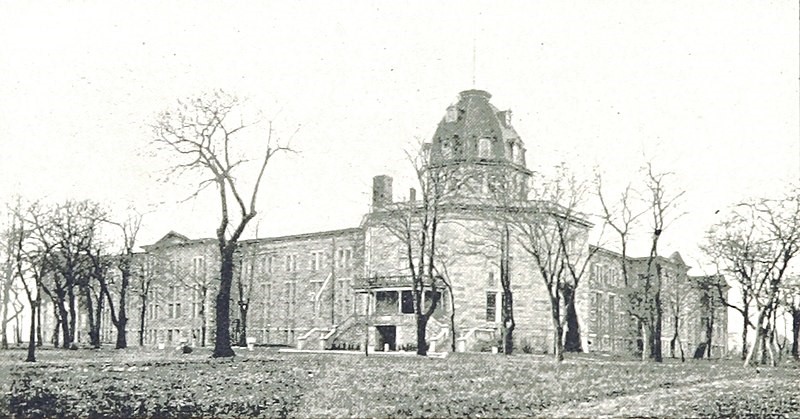Our idea of adventure today might be a road trip to a new destination, or simply getting on a terrifying roller coaster. However, what we envision never seems to include what we watch in movies, like going undercover and spying on an enemy, or traveling around the world in the least amount of days as possible. For journalist Elizabeth Cochrane Seaman, also known by her pen name Nellie Bly, these almost impossible events became realities as her career offered her these kinds of opportunities.1 Even though these assignments seem thrilling, Bly not only completed them of her own free will, but did so to help others by informing the public of various unacceptable behaviors that people were treating others to behind closed doors. There was no doubt in her mind that she would pass up an opportunity to use her gift as an exceptional reporter to liberate those being mistreated who had no voice to be heard. In one of Bly’s early assignments, she willingly allowed herself to be treated as one deemed to have a mental illness. In the 1880’s, she personally experienced the horrors that mentally ill patients went through. in order to have personal insight on the matter.
Bly was still new to journalism and in 1887 editors rarely hired women, so when Joseph Pulitzer’s New York World, a leading newspaper company at the time, offered her the opportunity to investigate an insane asylum, she did not hesitate to accept.2 Bly had so much confidence in herself that she had little doubt that she would be able to pull off the act of being insane. The asylum was located in New York on Blackwell’s Island, where it was known to be easy to get in, but nearly impossible to get out. She had read previous documents about the mistreatment of the mentally unstable and assumed they were all over dramatized; however, she knew little of what she would soon come to experience firsthand.3

Bly started this journey with seventy cents and a single promise from her editor that he would get her released after she spent ten days in the asylum on Blackwell’s Island, even if that meant exposing her identity.4 Bly first began by checking herself into a boarding house for women, and with some acting under her cover name Nellie Brown, she staged an encounter with the police. This soon led four doctors to claim she was insane, and soon after, Bly found herself riding in an ambulance on her way to Blackwell Island.
Once settled into the daily routine that doctors had for the patients at the asylum, Bly began to notice what was occurring within the facility. What happened behind the walls of this mental institution consisted of common mistreatment, such as having few heaters so everyone was freezing, forcing patients to shower in ice cold baths, and feeding them very small portions of food with repulsive tastes.5 The treatment became worse as the attendants were abusive and this misconduct was slowly integrated into part of the day-to-day procedure at the asylum, which Bly had to cooperate with.6 However, she was not alone, as she met other women in the institute that did not have any mental illnesses either, but had been checked in because of miscommunication and other various reasons.
The women Bly encountered each had their own story and explanation for how they ended up in this horrifying mental hospital. One woman specifically had no need to be there, but since she mostly spoke French, she was unable to tell the doctors her story, and because she was crying in fear of never being released, the attendants choked her. Bly recorded many cases such as this one, when women would be hurt and nobody would speak up and change it. The injures towards one of the women resulted in a black eye, and when the doctors asked about it, the nurses claimed she entered the facility with it. Many others shared with Bly the details of the abuse they encountered, including Mrs. Cotter:
Then they tied my hands and feet, and, throwing a sheet over my head, twisted it tightly around my throat, so I could not scream, and thus put me in a bathtub filled with cold water. They held me under until I gave up every hope and became senseless. At other times they took hold of my ears and beat my head on the floor and against the wall. Then they pulled out my hair by the roots, so that it will never grow in again.7

As promised, Bly’s editor got her out of the asylum ten days later, and soon after, Bly was able to share the outrage she discovered on her assignment with the world.8 Bly became that needed voice the patients in Blackwell’s Island Asylum were lacking, leading to a contribution of one million dollars per year towards caring for those with mental illnesses in New York City. This dreadful news had shocked the public and had given Bly the publicity she needed to boost her career. Yet she did not stop there. Bly continued with her passion of reporting and went undercover in places such as women’s prisons, and later traveled to the front lines during War World I.9 During Bly’s profession as a journalist she changed the views that individuals had towards the poor and helpless and how they should be treated in the hopes of having a future in which all people would be given the respect and dignity they deserve.
- Richard Ernsberger Jr., “Nellie Bly: Fearless Reporter,” American History 50, no. 2 (June 2015): 77. ↵
- MasterFILE Premier, August 2017, s.v. “Nellie Bly,” by Keira Stevenson. ↵
- Nellie Bly, Ten Days in a Mad-House (New York: Ian L. Munro, 1887), 1. ↵
- Nellie Bly, Ten Days in a Mad-House (New York: Ian L. Munro, 1887), 3. ↵
- Nellie Bly, Ten Days in a Mad-House (New York: Ian L. Munro, 1887), 13. ↵
- MasterFILE Premier, August 2017, s.v. “Nellie Bly,” by Keira Stevenson. ↵
- Nellie Bly, Ten Days in a Mad-House (New York: Ian L. Munro, 1887), 14. ↵
- Jean Marie Lutes, “Into the Madhouse with Nellie Bly: Girl Stunt Reporting in Late Nineteenth-Century America,” American Quarterly 54, no. 2 (2002): 218. ↵
- Richard Ernsberger Jr., “Nellie Bly: Fearless Reporter,” American History 50, no. 2 (June 2015): 77. ↵



77 comments
Robert Freise
The revolutionized mind of Nellie Bly gave the sense that many people of these insane asylums weren’t possessed by the devil, but they had mental deficiency and many of these people had schizophrenia and such. She was representing those that coudn’t speak for themselves. She is such an amazing women, especially for this time, because many of these people were ridiculed and not giving any attention for most of their life’s.
Kristy Feather
It is always so amazing to see journalists going undercover and putting themselves into situations that change the world. Instead of being afraid and just staying at home in their own safety and security, they purposefully put themselves at risk for the goodness of others and the importance of knowledge. Journalist are like the soldiers of information and Nellie Bly is proof of this.
Eric Ortega Rodriguez
Wow, this was a truly inspiring and informative article. I find it astonishing how Nellie Bly has the courage to go undercover in the Blackwell’s Island Insane Asylum. She is admirable because she is willing to go through a difficult time in order to achieve something greater, in this case helping the patients that were being severely mistreated. I find it fascinating how people were in the asylum that did not to be, they were just there because of a simple language barrier. Overall, this was a very well-written article with a good topic selection.
Crystal Baeza
Nellie Bly would have to be the most selfless and motivated woman. She knew she had to speak up for those being take advantage of and she succeeded doing so. I could never admit myself into an asylum and look up to Bly for going such a daring act. I wonder what happened next after news broke out about the mistreatment received from nurses. I’m glad Bly was able to be the voice for those patients who didn’t have one and would be possibly stuck in the asylum forever. I’m glad she continued doing the good deed and realized what a big help she was to others.
Yadira Chavez
My first response to this intriguing article is that Nellie Bly is a truly dedicated person to put herself into a crazy situation as being admitted into an asylum. Second, the way mental illness was approached before the late 20th century and on is appalling, and something that I always think about. Nellie must have been completely terrified because she may have died in conditions like that without even being ill. I am so glad that places like this don’t exist anymore, and now we care about how all sick people are treated.
Belene Cuellar
Bly is the exact kind person we need in the world to be the example to follow. In today’s world nobody cares enough to try and understand the problems people are going through. She was willing to go through all of that abuse to expose the truth and help out those who had no voice. She never let being a woman stop her from speaking her mind.
Kaitlyn Killebrew
It’s amazing how far people are willing to go to reveal the truth. Having only been hired for three years, and not given a lot of opportunities because she is a woman, it’s crazy that she jumped at the chance to go to an insane asylum. She even admitted that she believed that is was “dramatized”, and didn’t think she would find a whole lot to report on. The length she went to to report on a case she believed to be a waste of her time is outstanding. She knew she was going to get out in 10 days, but she still staged an interaction with the cops which could have tarnished her reputation by claiming insanity. The amount of courage she had to go and seek the truth of the abused patients and report about the lying doctors and nurses is something I hope to acquire when doing something I’m passionate about.
Aneesa Zubair
Great job on this article! Nellie Bly had a fascinating career. She made a daring decision by getting herself admitted into the Blackwell Island asylum. Many of the incidents that happened there, like putting patients in freezing bathtubs or pulling out their hair, sound unbelievable, but Nellie Bly confirmed them by experiencing them firsthand. I’m glad Bly brought attention to the treatment of people with mental illnesses (or who were thought to be mentally ill due to misunderstanding). Her investigative work had a huge impact on the public and demonstrated her skill as a journalist.
Madeline Torres
This is a very interesting article! It’s amazing just how much the truth changes things and it’s incredible how courageous she is to have taken such a frightful task. I know for a fact I would have never done such thing for a job but it is certain that if you are passionate about something you will do anything to accomplish a goal. This article is very short and to the point and I enjoyed how the author described how her experience at the asylum changed society’s way of seeing the asylum’s for what they are and how much they mistreated these poor patients.
Sofia Andrade
Reading this article showed that Bly was a risk taker. It took a lot to risk for Bly to put herself in the situation of being institutionalized. Through being institutionalized it enabled Bly to have first hand experience on what it was to be in the asylum. It is interesting that this was the start of many of her undercover reporting.